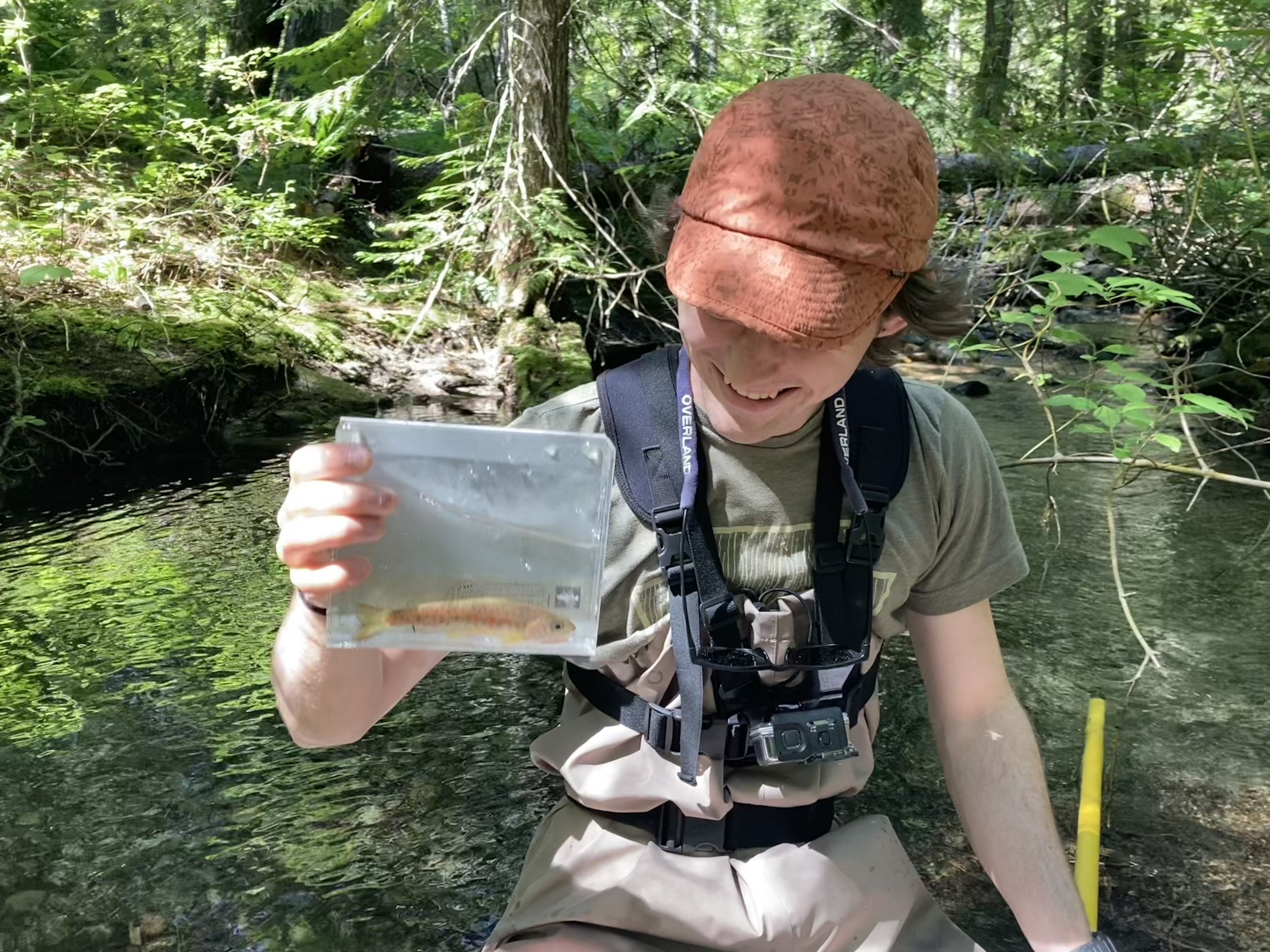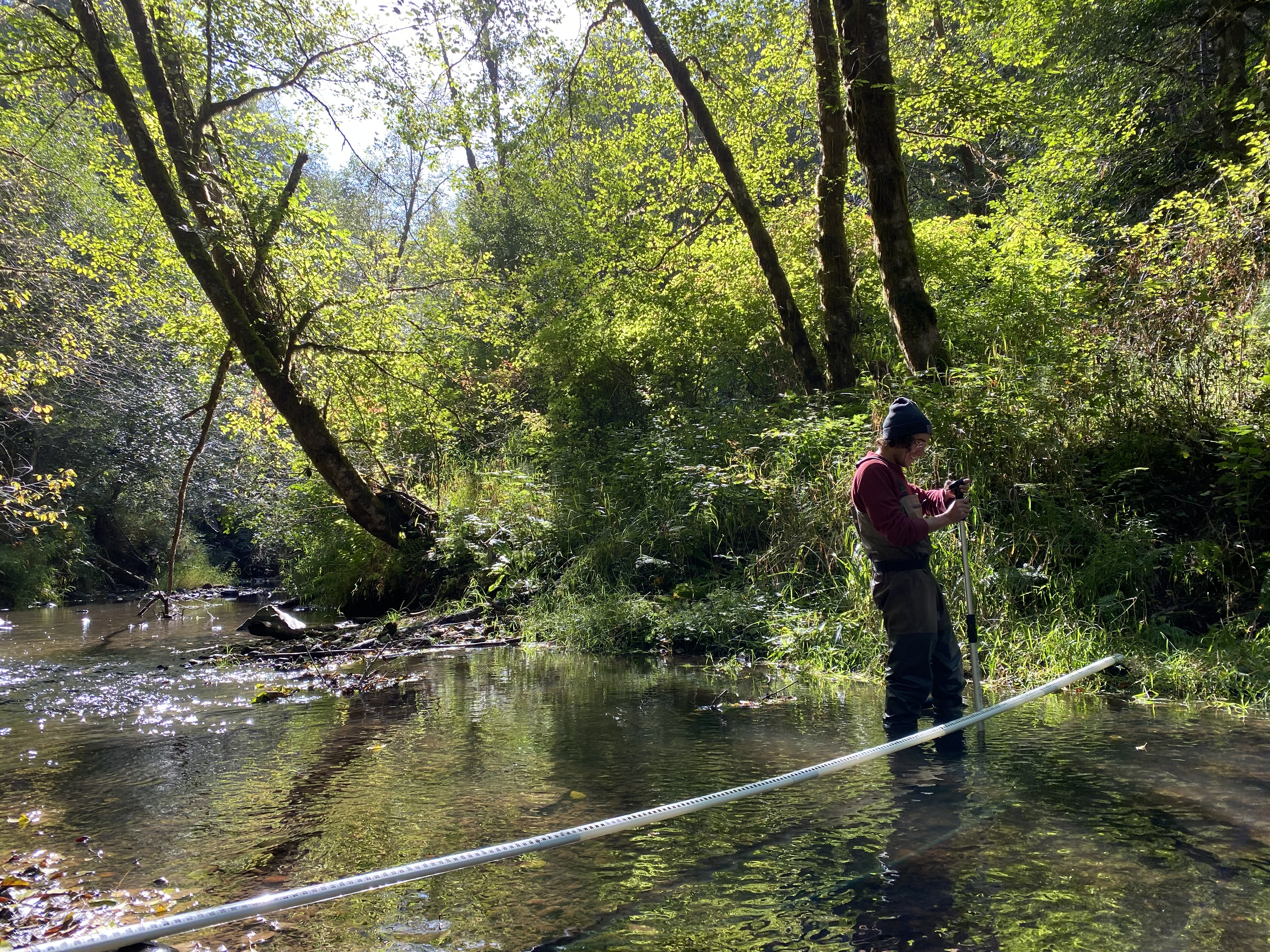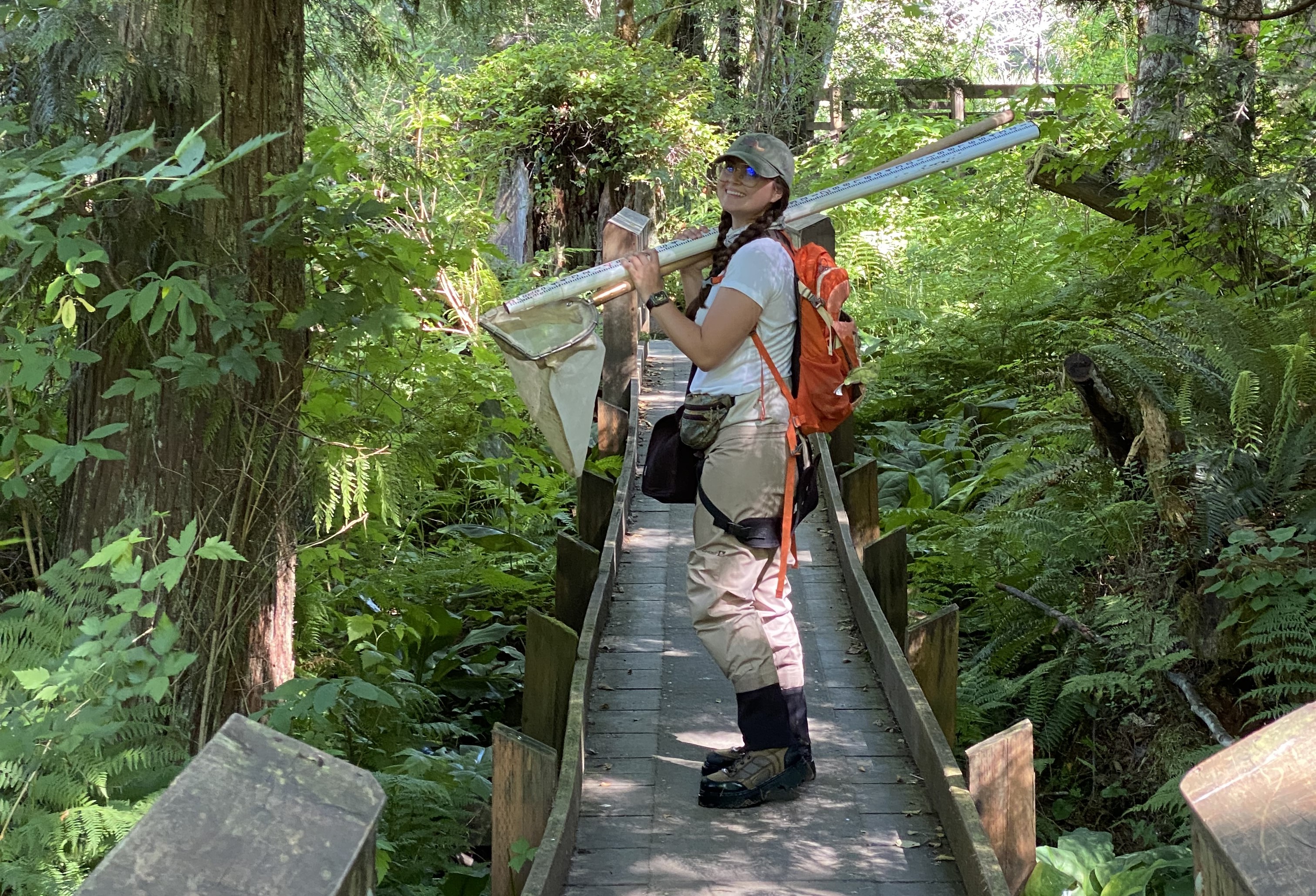
As an environmental technician, you can help us collect data about the critters that live in streams.
Our watershed health monitoring team is seeking eight early career scientists to join us for a summer of river and stream sampling. These watershed health environmental technicians and specialists will travel all over the state to complete physical surveys of designated stream sites. Work includes field navigation, biological monitoring, water quality sampling, habitat surveys, and using different types of monitoring equipment.
The application period is open starting on March 12, 2024. To be considered for the preliminary recruitment period, please submit an application on or before March 24, 2024.
Going on 15 years of dedicated data collection
Watershed health technician measure hundreds of channel dimension data points.
Our watershed health monitoring (WHM) program began in 2009 with a goal of tracking the condition of Washington’s rivers and streams. This long-term study informs stream habitat restoration projects and contributes to our knowledge of stream health and its stressors. Our data are publicly available in the WHM Search database, and our assessments inform the biannual State of the Salmon. We also report our results on stream health. In 2019, we published the first statewide assessment of biological health in perennial streams.
Each year, we sample over 80 river and stream sites to add to our ongoing dataset. Of these sites, 50 are randomly selected in one of eight regions, each on a rotating schedule. This summer, will be located in the Mid-Columbia Region, including sites near Cle Elum, Ellensburg, Rimrock, Yakima, Prosser, and Kennewick. The remaining reference sampling locations are scattered throughout the state.
Apply to join our team
Three crews of four members each typically spend a full day at a site, collecting samples and completing assessments. The days can be long, and crews may work in challenging weather conditions. The work requires a keen attention to detail. Technician carries sampling gear out to a site
The positions begin in early June and extend through mid-October. End dates can be flexible, if needed. All crews will be travelling during the scheduled work period, based out of the Lacey Ecology Building. Meals and housing are covered during travel periods.
If you enjoy the outdoors, have a background in natural sciences, and want to learn more, please consider applying to be an environmental scientist with us!
How to apply
- Read our position descriptions, and apply online:
- Visit our Watershed Health Monitoring webpage to learn more about our river and stream surveys.
- Submit your full application and materials by March 24, 2024, for early review.

